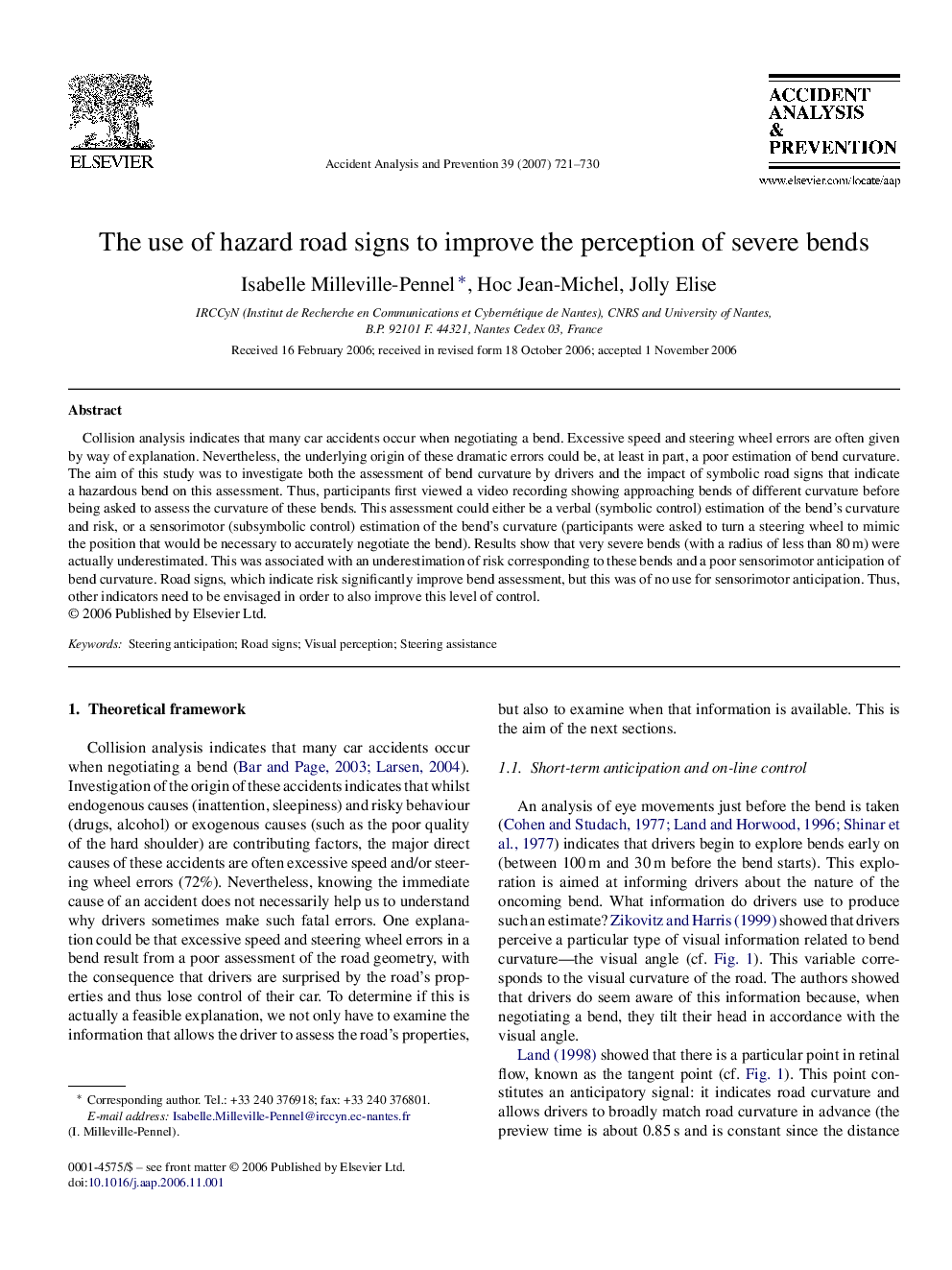| Article ID | Journal | Published Year | Pages | File Type |
|---|---|---|---|---|
| 573440 | Accident Analysis & Prevention | 2007 | 10 Pages |
Collision analysis indicates that many car accidents occur when negotiating a bend. Excessive speed and steering wheel errors are often given by way of explanation. Nevertheless, the underlying origin of these dramatic errors could be, at least in part, a poor estimation of bend curvature. The aim of this study was to investigate both the assessment of bend curvature by drivers and the impact of symbolic road signs that indicate a hazardous bend on this assessment. Thus, participants first viewed a video recording showing approaching bends of different curvature before being asked to assess the curvature of these bends. This assessment could either be a verbal (symbolic control) estimation of the bend's curvature and risk, or a sensorimotor (subsymbolic control) estimation of the bend's curvature (participants were asked to turn a steering wheel to mimic the position that would be necessary to accurately negotiate the bend). Results show that very severe bends (with a radius of less than 80 m) were actually underestimated. This was associated with an underestimation of risk corresponding to these bends and a poor sensorimotor anticipation of bend curvature. Road signs, which indicate risk significantly improve bend assessment, but this was of no use for sensorimotor anticipation. Thus, other indicators need to be envisaged in order to also improve this level of control.
